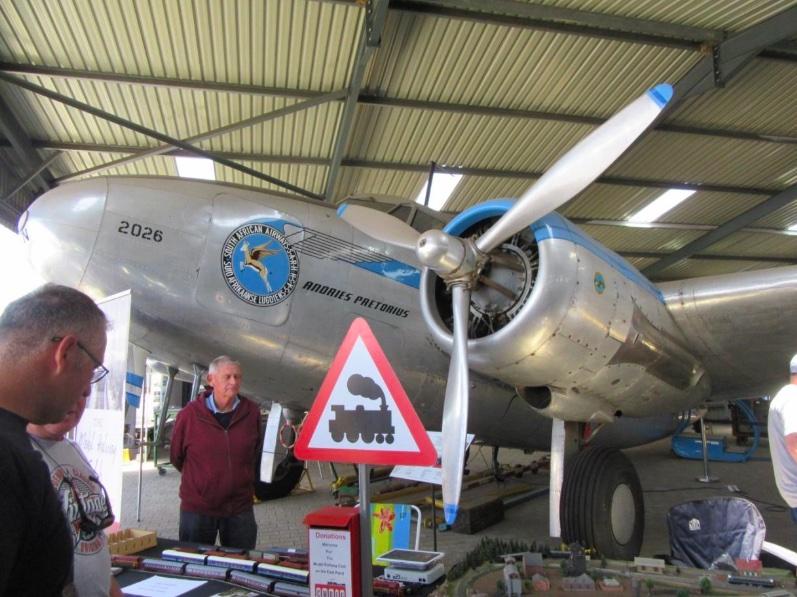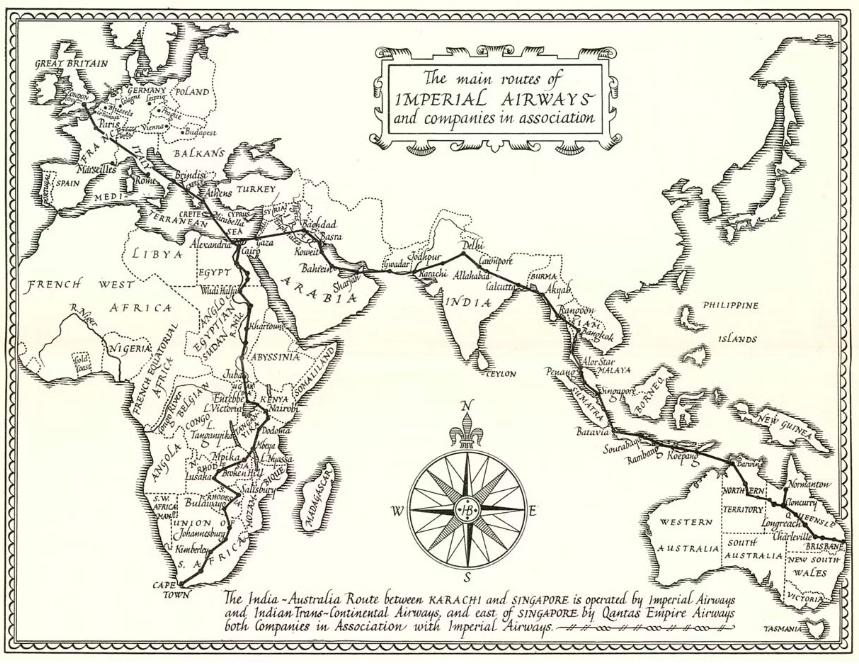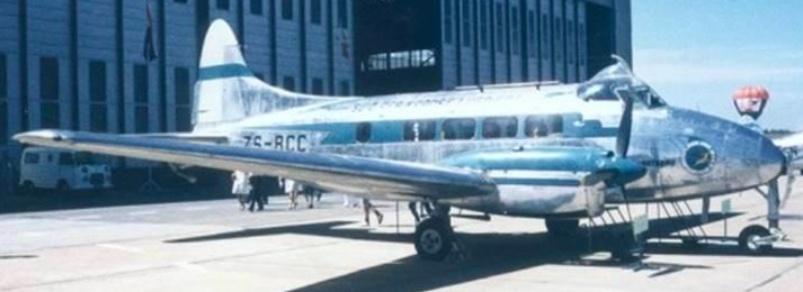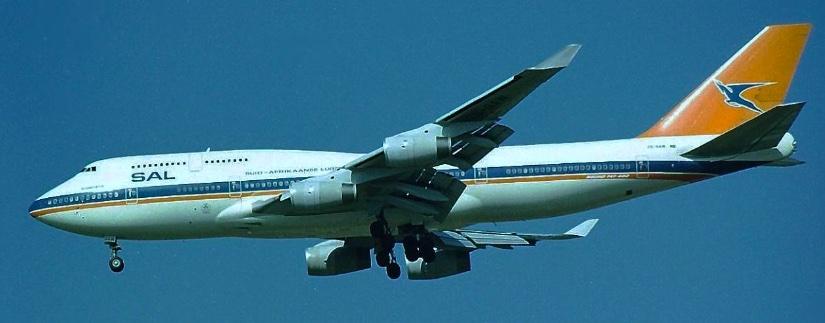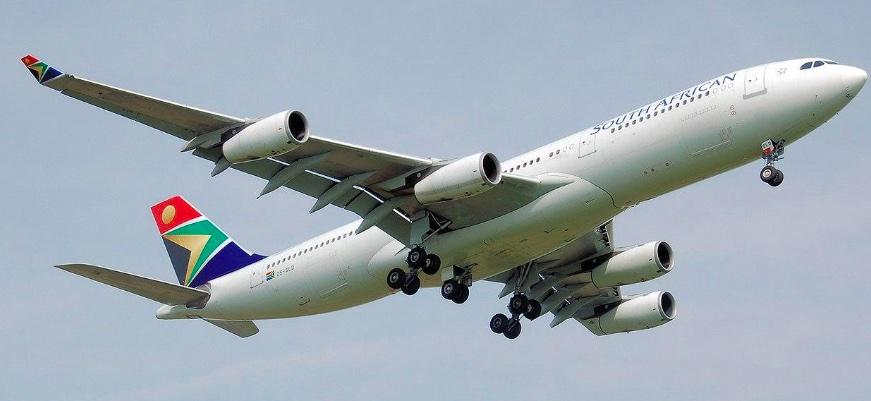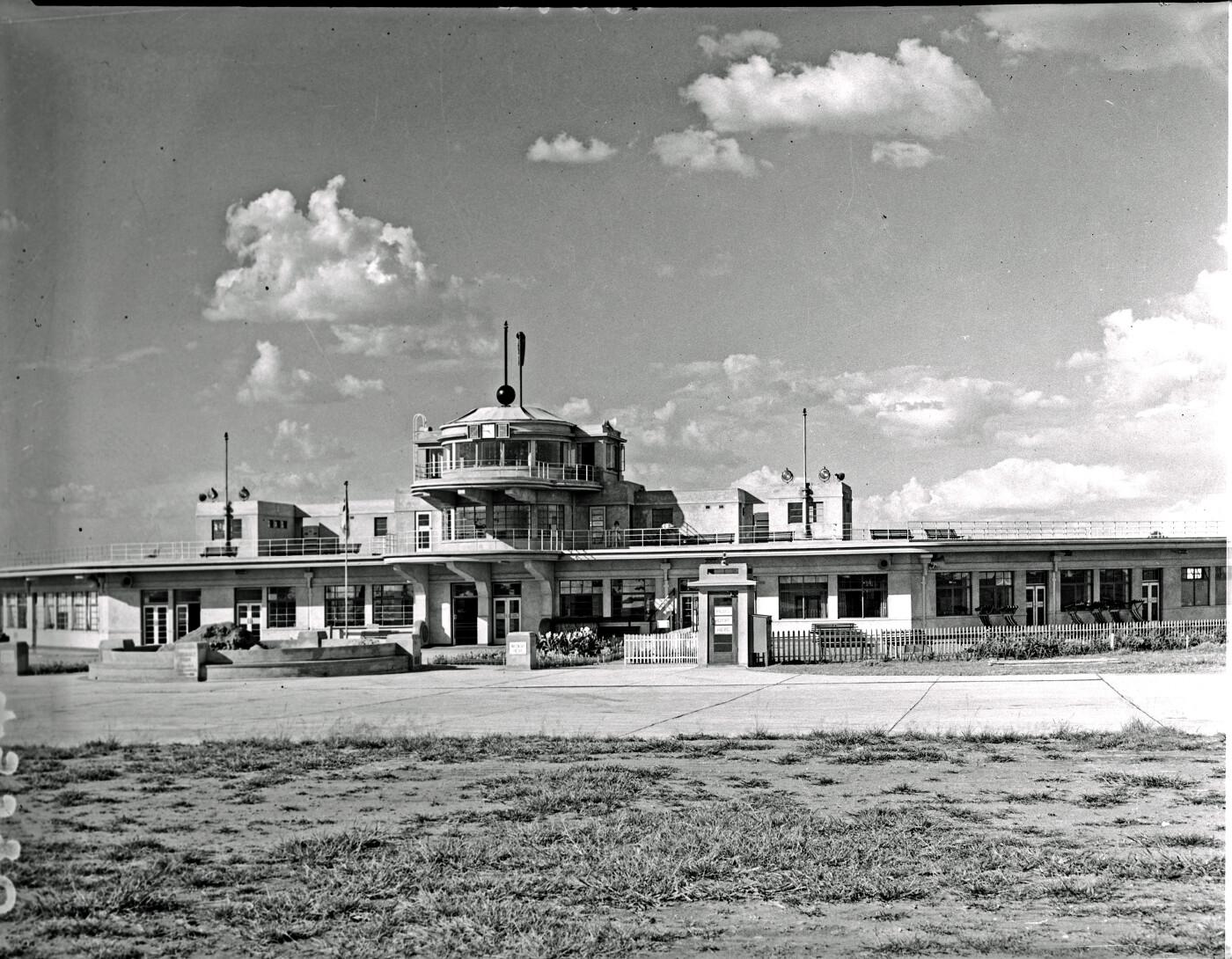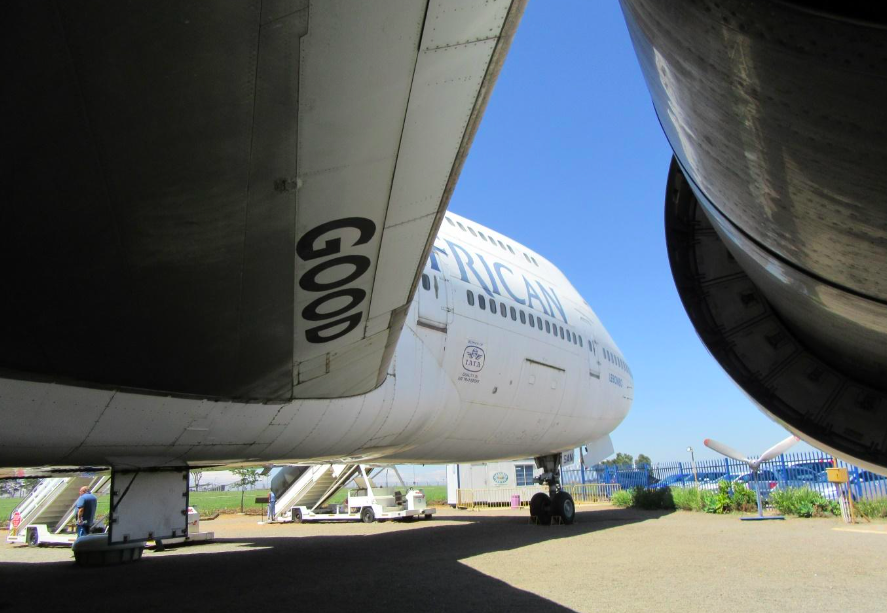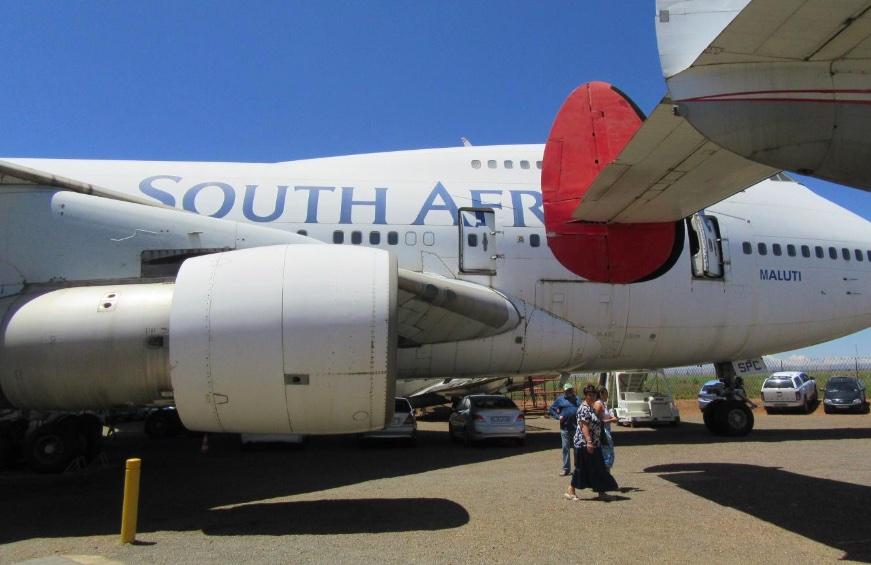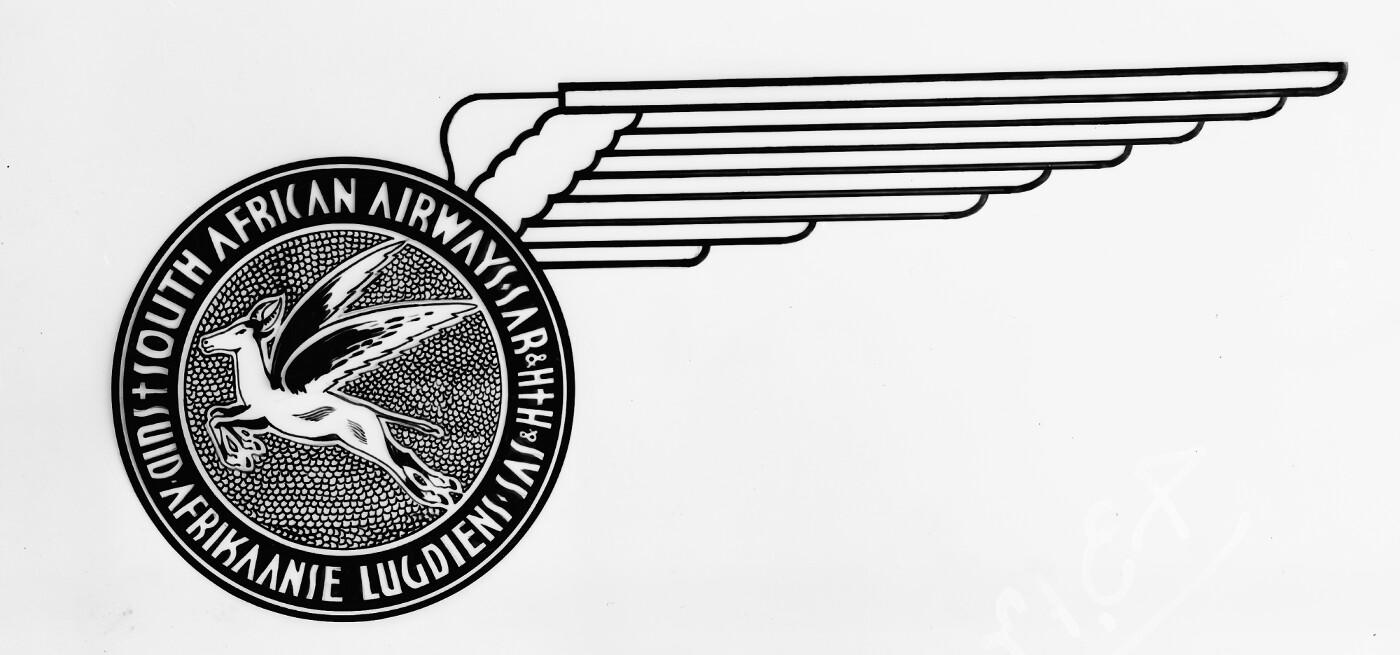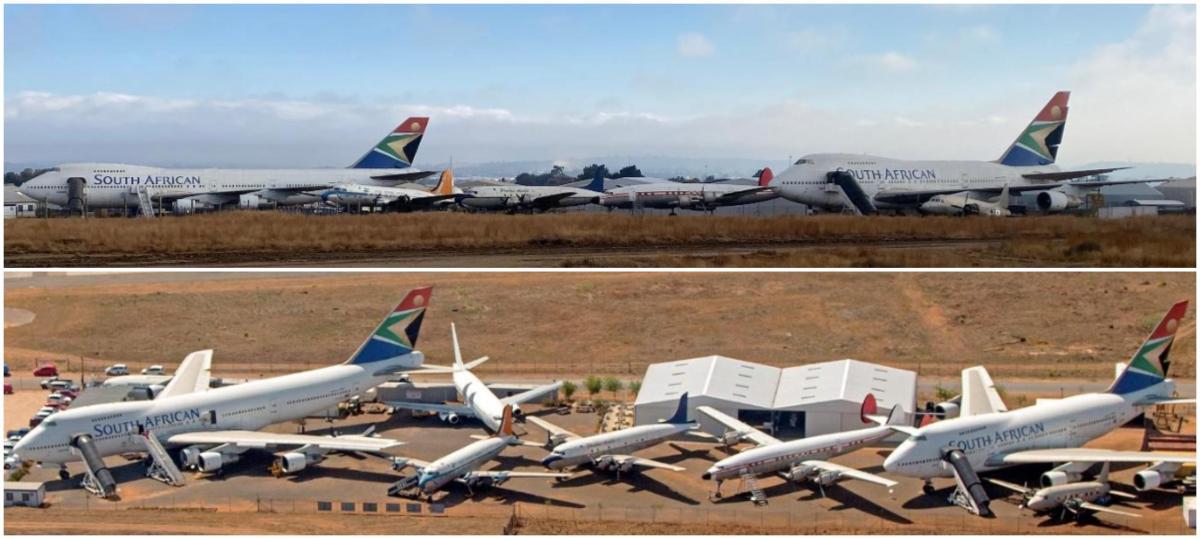
Disclaimer: Any views expressed by individuals and organisations are their own and do not in any way represent the views of The Heritage Portal. If you find any mistakes or historical inaccuracies, please contact the editor.
The South African Airways Museum, run entirely by volunteers, is a gem of a museum located next to the Rand Airport, Germiston. The museum is easily accessible from the M2 heading east towards Germiston and is a fascinating destination for a weekend outing.
SAA Society Museum purpose and history
The South African Airways Museum Society was founded in 1986 by a group of individuals from within South African Airways, along with outside entities, with the aim of preserving the history of the South African Airways (SAA) as well as that of civil aviation in general in South Africa. The museum aims to create an awareness of the greatness of South African aviation and the role it has played in South African society as well as preserve South Africa’s Civil Aviation History, and seems to do this very well.
The first aircraft secured for the SASA Museum was a Lockheed Lodestar, registered ZS-ASN, which was rescued in 1973 from a storage building at the South African Railways Museum. The aircraft was fully restored and the success of this venture inspired many others to volunteer to preserve South Africa’s aircraft for future generations to enjoy.
The Lodestar, a model L18-08, formed part of the SAA fleet from 1939 until 1955 and was eventually parked in a field and forgotten about. It was restored between 1973 and 1975. The significance of this aircraft is that it is the oldest aircraft in existence in South Africa that saw service with SAA.
The Lockheed L18-08 Lodestar, ZS-ASN, “Andries Pretorius” c/n 2026, in the Museum’s hangar (Sue Taylor)
The South African Airways Museum Society and aviation museum has operated since 1986, and is based at the old Transvaal Aviation Club at Rand Airport in Germiston. Rand Airport donated a tract of land nearby to Runway 29 for the SAA Museum Society’s static aircraft display and the South African Airways donated a Boeing 747-200 and a Boeing 747SP for display in the Aircraft Park. The museum also owns a Boeing 737-200, two Douglas DC-4s, a DC-3, Vickers Viking, Lockheed Lodestar, Lockheed L1649 Starliner, de Havilland Dove and numerous other exhibits which you can view when you visit the museum. The SAA Museum hosts two main attractions at the Rand Airport: the Aircraft Park and the display hall.
The early days of civil aviation in South Africa
In the early days of civil aviation in South Africa, most of the pioneering effort was being done by voluntary enthusiasts who formed light plane clubs, while the Witwatersrand and its gold mining fraternity provided the greatest material support for aviation entities which were opening up air traffic in South Africa. In those days, the Germiston Aerodrome of 1929 consisted of a grass-covered field and a single hangar. In 1929 an opportunity arose when the UK aviation company, Imperial Airways, made it known that they definitely intended to organise a service to South Africa, and the energy and vision of the Municipality of Germiston (later backed up by the Johannesburg Civic Authorities) laid the foundation of what would eventually become Rand Airport.
In 1931 the British and Union Government of South Africa concluded arrangements in which Imperial Airways would run a service from London to the Cape. The Germiston Municipality in South Africa was officially approached to provide an adequate airport capable of handling day and night traffic from long haul flights and of housing aircraft larger than any previously used in South Africa. The Germiston Town Council voted £65 000 for the conversion of the old aerodrome into a properly equipped airport and aviation hub, and work started at once. One large and one small hangar, as well as an administrative office building and workshop for Imperial Airways were constructed. A complete floodlighting system was installed and a number of cottages built for the staff of Imperial Airways. Also erected were wireless masts for communication with the Imperial Airways aircraft.
A map of Imperial Airways routes in 1935. Flights of Imperial Airways flew from Cape Town up over-land via Johannesburg and other African cities to Cairo and Europe, and also to Asia and Australia, all mostly over-land flights (Wikimedia Commons)
On Saturday 19 December 1931, the new airport was officially opened by the Governor-General, the Earl of Clarendon. The new airport was named Rand Airport and was to be South Africa’s main international airport. Over 2500 people from the area attended the opening. The following day the first Imperial Airways airmail flight from London arrived at the new Rand Airport. Imperial Airways was an important airline in UK Aviation history and the development of British Airways. After 1939 it became BOAC (British Overseas Airways Corporation), and specialised in long haul flights that connected the UK with its overseas territories.
The outbreak of the Second World War in 1939 changed British aviation dramatically and the UK military took control of all British airfields and private flying became rare (not to mention dangerous). The Rand Airport also played a vital role as a service base for the South African Air Force (SAAF) during World War II. In early 1939, the Union Defence Force took control of Rand Airport and by May 1940, all commercial flights ended.
During the early days of South African commercial aviation, several Junkers Ju 52/3m aircraft were operated, flying 14 passengers including four crew members on a thrice-weekly Durban–Johannesburg stretch, with weekly services on the Durban–East London–Port Elizabeth–George /Mossel Bay–Cape Town route. Following the war, flight frequencies were increased and more routes were opened, which necessitated the acquisition of more aircraft.
The de Havilland DH.104 Dove, ZS-BCC, “Katberg” in the museum’s hangar was rescued as a derelict hulk in the UK, brought to South Africa by a team from SAA and restored between 1979 and 1984.
ZS-BCC post restoration at the then Jan Smuts Airport. In the background is the Lockheed Lodestar ZS-ASN and the SAA 50th Anniversary Hot Air Balloon ZS-HPI. Photograph: SAA Museum archives.
The Douglas DC-4 Skymaster debuted with SAA in May 1946, flying between Johannesburg and Cape Town, which coincided with the introduction of the Douglas DC-3 Dakota on the Johannesburg–Durban route. After1952, passenger aircraft were powered by jet engines.
A brief history of South African Airways (SAA)
South African Airways, one of the World’s oldest Airlines, was formed on 1 February 1934, unbelievably only 30 years after the Wright Brothers had made their first powered flight on 17 December 1903. Commercial flight was definitely an idea whose time had come!
SAA was formed on 1 February 1934 following the acquisition of Union Airways, a small airmail delivery service. Union Airways was the first South African commercial airline and operated as an independent company between 1929 and 1934, before being taken over by the South African government. Upon acquisition, the South African government changed the airline's name to South African Airways (SAA) and the airline was placed under the control of the South African Railways and Harbours Administration.
In post-apartheid South Africa, SAA replaced the Springbok emblem and the old national colours of orange, white and blue with a new aircraft livery based upon the new national flag, with an added sun motif. With the release of Nelson Mandela, one of SAA's 747-300s, named ‘Ndizani’ (registration ZS-SAJ), was painted in bright colours.
A Boeing 747-400 "ZS-SAW" painted in the pre–1997 orange, blue and white livery and, featuring the Afrikaans name of the airline SAL (Suid-Afrikaanse Lugdiens) (Wikipedia)
Airbus 340-200 showing new post 1994 colours (Wikipedia).
History of Rand Airport
Rand airport, located in Germiston, was constructed in the late 1920s and early 1930s as the main airport for Johannesburg. It was soon outgrown as both the city of Johannesburg and aviation traffic expanded. Rand Airport could not accommodate the larger size of aircraft now operating on services between South Africa and Great Britain. SAA and its commercial operations moved to Palmietfontein Airport in 1948 until 1952 when the new commercial airport, Jan Smuts Airport (now the OR Tambo International Airport), was being built.
Due to its pivotal role in civil aviation history in South Africa, the main terminal building, an Art Deco building, at Rand Airport was declared a National Heritage Site. The terminal building has remained virtually the same since it was built.
Rand Airport terminal, an Art Deco building, was built to resemble the shape of an aircraft when viewed head-on. This building is still in use. (DRISA)
Rand Airport was privatised in 2000 after losing its status as an international airport the year before. It now functions as a private facility and training centre for young pilots. The airport is also open to the public, offering a range of displays and family-fun activities to make your trip well worth the while. The South African Airways Museum Society is located at the airport, situated inside the old Transvaal Aviation Club (TAC) building and drinking hole, and once a MES for the aviation officers of the SAAF, (5 Wing) is also a National Heritage Site. The old Rand Airport now hosts air charter operators, flying schools and a number of aircraft maintenance organisations, as well other aviation-related enterprises.
Static displays that really amaze
The SAA Museum Society is very proud to be the only museum in the world with two static display Boeing 747s plus a collection of propeller-driven aircraft.
Funds for the society's preservation efforts are generated from ad hoc feet traffic, school tours, the utilisation of Boeing 747 “Lebombo” and the other static display aircraft for small corporate related functions such as board meetings and conferences, product launches, award ceremonies, even weddings. The aircraft are also utilised by training organisations for training of aircraft mechanics, technicians and cabin crew. It may be possible for certain maintenance procedures to be undertaken as training exercises, which will assist the society with its on-going preservation task, as well as being beneficial to students who will get an opportunity to work on ‘the real thing’.
The Boeing 747-244B ZS-SAN ‘Lebombo’ is now permanently housed at the South African Airways museum after being donated by SAA. In 2006, the aircraft was landed at Rand Airport and then towed (not a simple thing) the short distance to its present site to be preserved for future generations. The first flight of ‘Lebombo’ was on the 30 September 1971. “Lebombo” performed the first SAA 747 passenger service flying Johannesburg-Luanda-London on 10 December 1971. Her last service with SAA was 24 November 2003 after more than 31 years of flying. During its commercial lifespan, this aircraft carried over six million passengers and made 20 304 landings.
A famous Boeing
The Boeing 747-244B ZS-SAN ‘Lebombo’ is somewhat locally and globally famous. On 24 June 1995, the pilots wowed 63 000 rugby spectators as the aircraft swooped low over Ellis Park Stadium at the Rugby World Cup final between South Africa and New Zealand, bearing the message, Good Luck Bokke, beneath her wings.
The word "Good' visible on the underside of Boeing 747-244B ZS-SAN ‘Lebombo’. The rest of the message “Luck Bokke’ Is on the other wing. (Sue Taylor)
The Boeing 747SP ZS-SPC ‘Maluti’
Another massive aircraft on display at the Museum was donated by SAA to the SAA Museum and is the Boeing 747SP ZS-SPC ‘Maluti’. ‘Maluti’ was registered to SAA in January 1976 and her first flight was 4 June 1976. The last flight of B747SP, ZS-SPC, was on the 24th of October 2003 when the aircraft operated flight SA 280/281 from Johannesburg-Perth-Johannesburg and on the 30 September 2006 was retired from service after 27 years. In September 2006 it was also landed at Rand Airport and was pushed towards the SAA Society Museums Aircraft Park by various heavy-duty vehicles.
Boeing 747SP-44 ZS-SPC “Maluti” at the SAA Museum (Sue Taylor)
The Hangar at the SAA Museum
In order to preserve their two oldest aircraft, the Lodestar and Dove, the SAA Museum Society needed to erect a suitably sized hangar. Thirteen years after setting up at Rand Aiprt, the museum had saved up sufficient funds and on 27 May 2017, the Lodestar and Dove were moved into the hangar, at last out of the harsh South African Climate. The hangar is also where exhibitions, corporate functions and fundraising events such as the Planes, Trains and Automobiles collectors fairs are held.
The SAA Museum Society’s archives and indoor displays
From the outset, the archival collection of the SAA formed part of the then South African Railways and Harbours Administration, and it was the responsibility of the Railway Museum at Johannesburg Station to preserve the airline's history. By the end of the 1960s, this collection consisted mainly of photographs, models, uniforms and other interesting items, but due to a lack of space, no actual aircraft. The South African Airways Museum Society archives contain many valuable historical documents about aviation in South Africa during the 1930s and 40s. The archives also house a comprehensive collection of newspaper clippings and photographs dating from 1931 to 1947. The website itself also has many useful resources and photographs outlining the history of aviation in South Africa.
The SAA Museum Society’s collection of artefacts is now housed in the former Transvaal Aviation Club (TAC) building and here one can view a range of historic items, including photographs, aircraft models, crew uniforms, aircraft instruments, timetables, small artefacts and general civil aviation memorabilia. You can also chat to the very knowledgeable volunteer staff. There is a museum shop located in the same building, where you can purchase a memento of your visit.
Archival displays - the wreck of the Helderberg SAA flight 295
The Helderberg SAA 747 Flight 295 disaster in 1987 was reported extensively in local newspapers as South Africa sought an explanation for the tragedy. All on board perished in an accident caused by an on-board fire, which has never been fully explained. There is a small, but sobering, display of items salvaged and newspaper articles of the tragedy.
The flight was a ‘combi’ flight, combining passengers and freight, and it seems that some elements in the fright caught fire during flight. The fire destroyed the aircraft's important electrical systems, resulting in loss of communication and control of the aircraft. Passengers and crew suffocated from smoke inhalation. The plane broke up before entering the ocean near Mauritius. With some difficulty, debris was eventually recovered from the flight, including one of the flight recorders, from a depth of 4900 metres. Terrorism and sabotage was initially suspected but was later disproven.
The Margo commission concluded that it was not possible to apportion blame to any one individual for the fire, removing any terrorism concerns. In 1996, the Truth and Reconciliation Commission (TRC), established by the post-apartheid South African government, investigated apartheid-era atrocities. In particular, Flight 295 was investigated to determine if there was any truth behind conspiracy theories that asserted that the Margo Commission had covered up or missed any evidence that might implicate the previous government. The crash of the Helderberg remains one of the unsolved mysteries of commercial aviation and the cause of the fire is still unclear, although theories still abound.
Archival displays - SAA cabin crockery and cutlery
It is wonderful that these fragile items are being collected together for a museum display. Apparently the SAA Museum has more of these items stored than are on display, but thousands of individual items of these crockery sets have vanished – notwithstanding breakages. The SAA Museum is constantly updating its database on the types of crockery and the development of the ‘flying springbok’ logo used on its flight services.
The first Flying Springbok logo, 1935 (DRISA)
The well-known 'flying springbok' emblem in use on SAA crockery from 1948, on the Skymaster and Super Constellation services to London. (Sue Taylor)
The way forward for long-haul commercial aviation in South Africa
After many years of operation, SAA faced financial difficulties and bankruptcy during the period 2012–2020, being placed in business rescue in 2019. In 2020, the South African government announced the enterprise would be ceasing operations after 86 years, but this did not actually happen and a restructuring plan was accepted by stakeholders. The South African national airline has been re-launched as a consortium between the South African government and the Takatso Consortium which is a partnership of Harith General Partners and Global Airways. While SAA is still flying aircraft locally, its future is by no means secure.
The South African Airways Museum Society is a non-profit volunteer organisation run by highly motivated passionate enthusiasts dedicated to the preservation of civil aviation history in South Africa. The SAA Museum is staffed by dedicated volunteers and is open Tuesdays to Sundays and public holidays. Contact them on 076 879 5044, visit www.saamuseum.co.za or email them on info@saamuseum.co.za for more information.
About the author: Sue Taylor holds a PhD in Plant Biotechnology from the University of KwaZulu-Natal, South Africa. Her current interests encompass cities and urban greening, material culture and historical archaeology, and is researching the disintegration (and rehabilitation) of landscapes and buildings. She has recently completed three years as a Research Fellow at the Afromontane Research Unit, QwaQwa, University of Free State (South Africa) and during that time published two book chapters on urban issues, a journal paper on climate change and a paper on a non-indigenous Asian fresh water snail found in Johannesburg.
Comments will load below. If for any reason none appear click here for some troubleshooting tips. If you would like to post a comment and need instructions click here.

